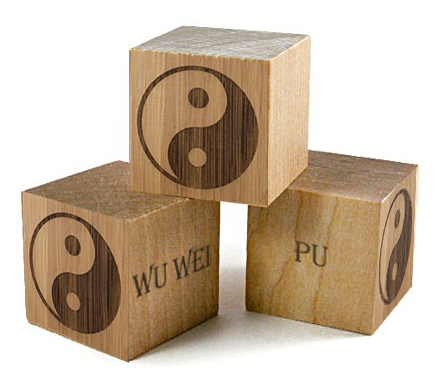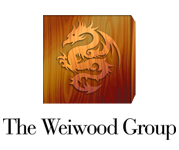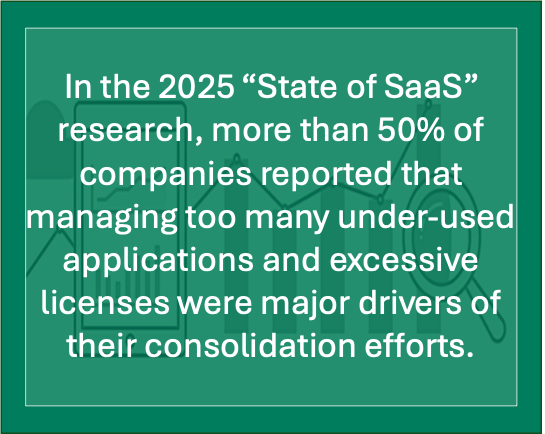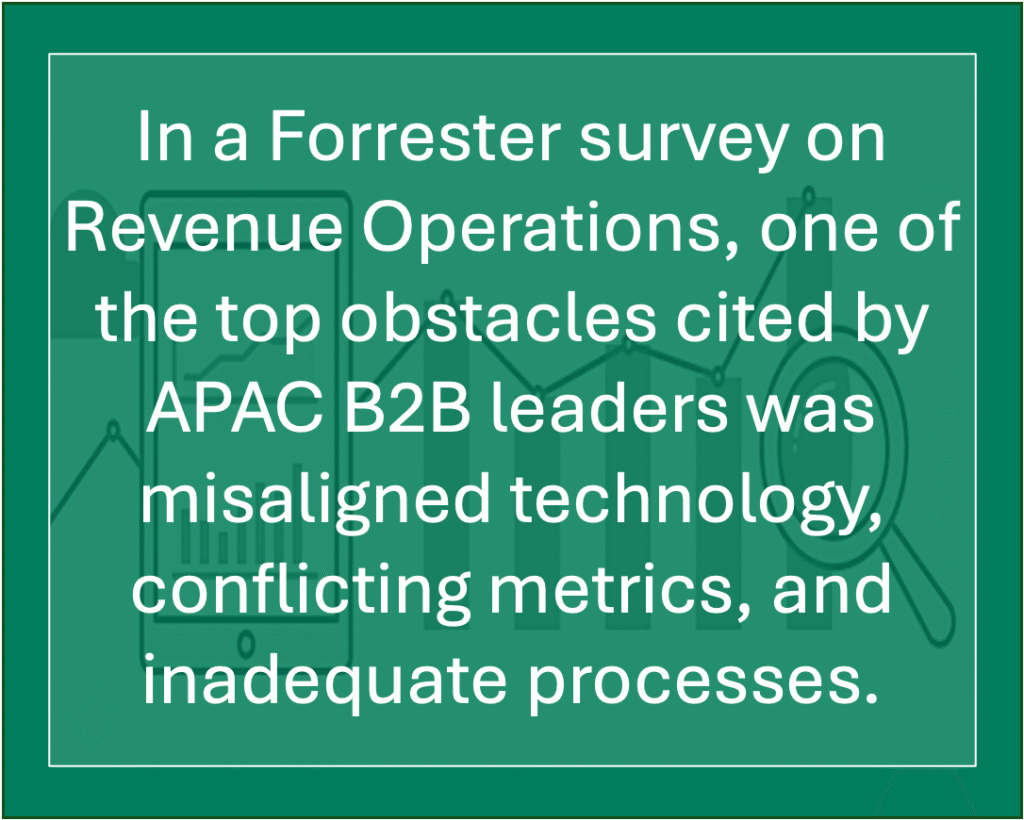by JD Woods
Ten years ago, sales operations was a back-office function, the team that managed pipeline reviews, territory alignments, and reconciled CRM reports, ideally with at least one “Excel Whisperer” fixing broken formulas minutes before the forecast meeting. Today, that same group sits at the crossroads of automation, analytics, and organizational behavior and are now expected to serve as the command center of the entire revenue engine.
The shift to Revenue Operations (RevOps), and the infrastructure to support it, is no longer optional. It’s the only way to align growth, truth, and trust across the go-to-market organization.
Yet in practice, most companies haven’t made that leap. They’re still running the same old engine; a dozen disconnected tools, siloed data, and teams that don’t quite trust what the numbers say. The Modern Revenue Engine Doesn’t Need More Horsepower — It Needs Less Drag
Find the Courage to Consolidate. Stop Buying More Tools, and Start Killing Redundant Ones
Before RevOps can function, organizations need to speak one data language. If you map the tech stack of a mid-size company today, you’ll find an ecosystem that looks less like a system and more like a digital junk drawer: a CRM here, an automation tool there, a data-enrichment plug-in, a marketing platform, an enablement app, a quote tool, a project tracker, and maybe three ways to calculate commission.
According to BetterCloud, the average company now runs over 100 SaaS applications, while larger enterprises often exceed 250. It’s no wonder nearly half of salespeople say they feel overwhelmed by their tech stack — and those overwhelmed reps are 43% less likely to hit quota. That’s not a technology issue; it’s a leadership gap.
Buying tools feels like progress. Pruning them feels like pain. It’s easier to add than to audit, and many leaders mistake “more” for “modern.” But when the revenue engine slows down, it’s rarely a lack of horsepower. The real culprit is drag; overlapping tools, duplicate workflows, and conflicting data definitions. The courage to consolidate begins with one difficult question:
What actually drives revenue, and what just keeps people busy?
This is where the integration work begins; not with code, but with accountability. It requires operations, IT, and finance to agree on a single, shared definition of “truth.” When that alignment happens, something powerful follows: systems start to breathe, data moves cleanly, and insights connect.
At the Weiwood Group, we call that Flow Momentum™ — the practice of removing friction so that performance and value creation can actually flow.
Fewer Owners, More Accountability — Move From Siloed Functions to Integrated Revenue Operations
For decades, companies organized their growth functions like separate countries: Marketing generated leads, Sales closed them, and Customer Success renewed them.
And for a while, it worked. Then it didn’t. The customer journey is no longer linear—it loops, revisits, and re-evaluates. The funnel isn’t really a funnel anymore; it’s an orbit, and your perceived value has to be the most magnetic object within it.
That’s why Gartner projects that 75% of the world’s highest-growth companies will operate on a RevOps model this year. RevOps isn’t just a trend; it’s a structural correction. It replaces handoffs with continuity and finger-pointing with shared accountability.
When companies align Marketing, Sales, and Customer Success around unified metrics—for example, ARR, MRR, retention, and customer lifetime value—they see double-digit gains in both alignment and productivity. But that comes at a cost: fewer owners. Integration means fewer fiefdoms, fewer excuses, and fewer blind spots.
The new accountability model rewards collaboration and exposes duplication. It’s not always comfortable — but neither is growth that lasts.
That’s Flow Momentum™ again: the elimination of friction between systems, people, and decisions.
Train Trust, Not Tools. Adoption ≠ Enablement
If the first two shifts are operational, this one is deeply human. Most organizations celebrate the launch of a new system as if implementation equals transformation. “Go live” becomes the finish line. But adoption is not enablement — logging in doesn’t mean buying in.
Salesforce reports that only 35% of sales professionals fully trust their organization’s data. Combine that with “tool fatigue,” overlapping licenses, and adoption gaps, and you have the perfect storm for frustration. Two-thirds of your team are questioning the very numbers that drive their compensation, forecasts, and performance conversations. That’s not just inefficient — it’s corrosive.
Trust is the key. Without it, even the best tools devolve into busywork. Enablement begins when people understand why the system exists and how it makes their work more valuable, when managers stop policing usage and start coaching understanding, and when leaders recognize that the right metric isn’t how many users logged in but how many decisions got better because they did.
Change management in Sales Ops 2.0 isn’t about rolling out another platform. It’s about building confidence in the system; showing reps, managers, and analysts that the data serves them, not the other way around.
That’s Thrive Momentum™: building coachable, confident teams who believe in the process because they helped build it.
Transparency Is the Only Culture That Scales — RevOps as Leadership Design
RevOps isn’t just a structure; it’s culture engineering. It’s what happens when leadership decides to replace control with clarity. Nearly 90% of high-growth companies now have a formal RevOps function — yet only one in four say it’s properly resourced or supported. That gap tells you everything: most executives love the idea of alignment, but few are ready to lead through the transparency it demands.
True RevOps maturity means open dashboards, visible KPIs, and one version of the truth — even when it’s uncomfortable. It means eliminating shadow metrics, closing “unofficial” reports, and aligning incentives so that every department wins or loses together. The hardest part of RevOps isn’t integration or automation. It’s vulnerability.
When everyone sees the same data, leadership loses the ability to spin — and that’s exactly why it works. Transparency scales because it’s self-correcting. You can’t hide bad process or inflated forecasts under shared sunlight.
That’s Engagement Momentum™: clarity of purpose, trust in data, and alignment around one truth everyone can see.
The Weiwood Group View: The Subtractive Advantage

Our management philosophy aligns with several concepts drawn from Taoist principles. One of them, Pu (or P’u), means “the value in the uncarved block” — a symbol of the natural, simple, and powerful state of things in their original, unaltered form. From this principle, we learn that processes work best when kept as simple as possible.
The Weiwood Group logo — a dragon revealed within a piece of wood — is inspired by this idea. It represents the potential already hidden inside every organization, waiting to be uncovered by removing what doesn’t belong.
Every company says it wants to accelerate. Few are willing to strip away what slows them down. Yet acceleration is often achieved not by addition, but by subtraction — by removing friction until what remains is flow:
Flow Momentum™ connects systems and simplifies process.
Thrive Momentum™ builds trust so people can perform.
Engagement Momentum™ aligns leaders around transparency and truth.
Those aren’t abstract ideas; they’re operating principles that turn chaos into rhythm.
So, here’s the challenge:
Stop equating progress with procurement.
Stop chasing the next shiny tool while the ones you already own gather digital dust.
Instead, ask the harder question: What can we remove today that would make everything else run better tomorrow?
The modern revenue engine doesn’t need more horsepower — it needs less drag.
Growth isn’t about acceleration; it’s about reduction.
It’s not about adding more systems; it’s about building fewer, better, trusted ones.
And that begins, as all real transformation does, with leadership brave enough to simplify.
Ready to Reclaim the Value That’s Already Yours?
If your CRM or ERP feels more like a burden than a boost, you’re not alone—and you’re not stuck. A smart reassessment could unlock the productivity, insight, and ROI you expected in the first place.
Let’s make your systems finally work as hard as you do. Contact us.




